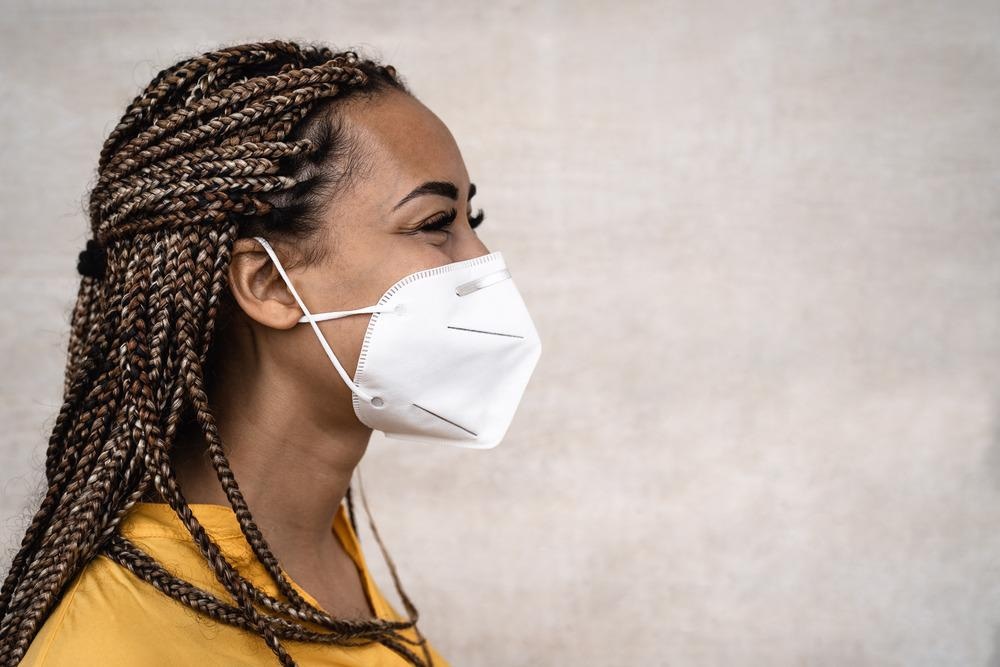
Image Credit: AlessandroBiascioli/Shutterstock.com
A team of scientists – whose work previously included studying extraterrestrial objects with scanning electroscopy microscopy – has turned their attention to putting face masks under the microscope. Their work reveals face masks’ effectiveness at combating the spread of COVID-19.
Seeing Which Face Masks Work Best with Microscopy
Before the COVID-19 pandemic hit, microanalysis expert Edward Vicenzi was using microscopes to study museum specimens held at the Smithsonian’s Museum Conservation Institute in Suitland, near Washington D.C., USA.
However, when the outbreak started spreading around the world in March 2020, Vicenzi sought ways he could contribute to global scientific efforts to it. Working with colleagues from the nearby National Institute for Standards and Technology, Vicenzi began to focus on face masks and their effectiveness.
Any face mask is better than nothing at stopping airborne particles like those carrying the coronavirus that causes COVID-19 from passing between people and leading to infection – especially if they fit well and are worn properly. However, some materials and designs are better than others.
Vicenzi and the team of researchers used microscopes to look carefully at dozens of materials, counting airborne particles in each to see which was most effective. As well as different types of masks – including surgical masks and N95 masks – Vicenzi looked at DIY mask materials like coffee filters and pillowcases.
The team found that N95 masks – or filtering facepiece respirators – were the most effective type of face mask at filtering aerosols out of wearers’ exhaled breath. Aerosols are tiny particles that are light enough to float in the air. They are what carry SARS-CoV-2 between people, causing infection.
Reporting on their findings, the researchers noted that synthetic materials like chiffon or rayon were more likely to let aerosol particles through the mask. Tightly woven organic materials such as cotton flannels proved much better at filtering these potentially infecting particles.
They were also able to use microscopic images of the face mask materials tested to add to the large body of evidence for the overall effectiveness of wearing face masks. As countries begin to lift COVID-19 restrictions in the coming months, this kind of data is vital as it can lead to policies that keep people as safe as possible.
Testing Face Masks with Scanning Electron Microscopy
While numerous methods for optical and electrical microscopy are used in the kinds of materials microanalysis that Vicenzi and the team typically work on, scanning electron microscopy was the leading technique for their recent research.
Scanning electron microscopes focus a beam of electrons over the surface of the sample they are analyzing. These electrons interact with the sample’s atoms, creating new electrical signals which are picked up by the device.
Researchers use these signals to find out information about the atomic components and composition of the material or sample being studied. Nanoscale surface topography data is revealed in this process, as well as detailed atom-by-atom information about the makeup of the sample.
Looking at Mask Materials’ Microscopic Textures to Test their Effectiveness
Using scanning electron microscopy, Vicenzi and his team identified how the microscopic texture – or nanostructure – of the material’s surface was a good indicator of its performance as an aerosol filter.
Because of their highly organized nanostructure (mostly straight and smooth fibers), synthetic, man-made fabrics like polyester trap fewer particles than others.
Cotton fibers, on the other hand, are marked by complex kinks, bends, and folds in a wrinkled texture. Vicenzi and his team found that these nanoscale shapes in the fabric led to much better performance in filtering aerosols.
Another factor in cotton’s better performance as an aerosol filter is its ability to absorb moisture. When you breathe, a cotton mask swells up slightly with the water in your breath. This makes it more difficult for nanoparticles like aerosols to get through the mask.
Next Steps for Microscopes in the Fight Against COVID-19
Vicenzi intends to continue to analyze face masks with microscopy and hopes his research will lead to better decision-making and overall safety as the pandemic continues to claim lives around the world.
References and Further Reading
Mega, Emiliano (2021). “Microscopic Images Reveal the Science and Beauty of Face Masks.” Science News. [Online] https://www.sciencenews.org/article/covid-coronavirus-face-masks-microscopic-images.
Zangmeister, C.D., et al. (2020). “Filtration Efficiencies of Nanoscale Aerosol by Cloth Mask Materials Used to Slow the Spread of SARS-CoV-2.” ACS Nano. [Online] https://www.doi.org/10.1021/acsnano.0c05025.
Zangmeister, C.D., et al. (2021). “Hydration of Hydrophilic Cloth Facial Coverings Greatly Increases the Filtration Properties for Nanometer and Micron-sized Particles.” ACS Applied Nano Materials. [Online] https://www.doi.org/10.1021/acsanm.0c03319.
Disclaimer: The views expressed here are those of the author expressed in their private capacity and do not necessarily represent the views of AZoM.com Limited T/A AZoNetwork the owner and operator of this website. This disclaimer forms part of the Terms and conditions of use of this website.